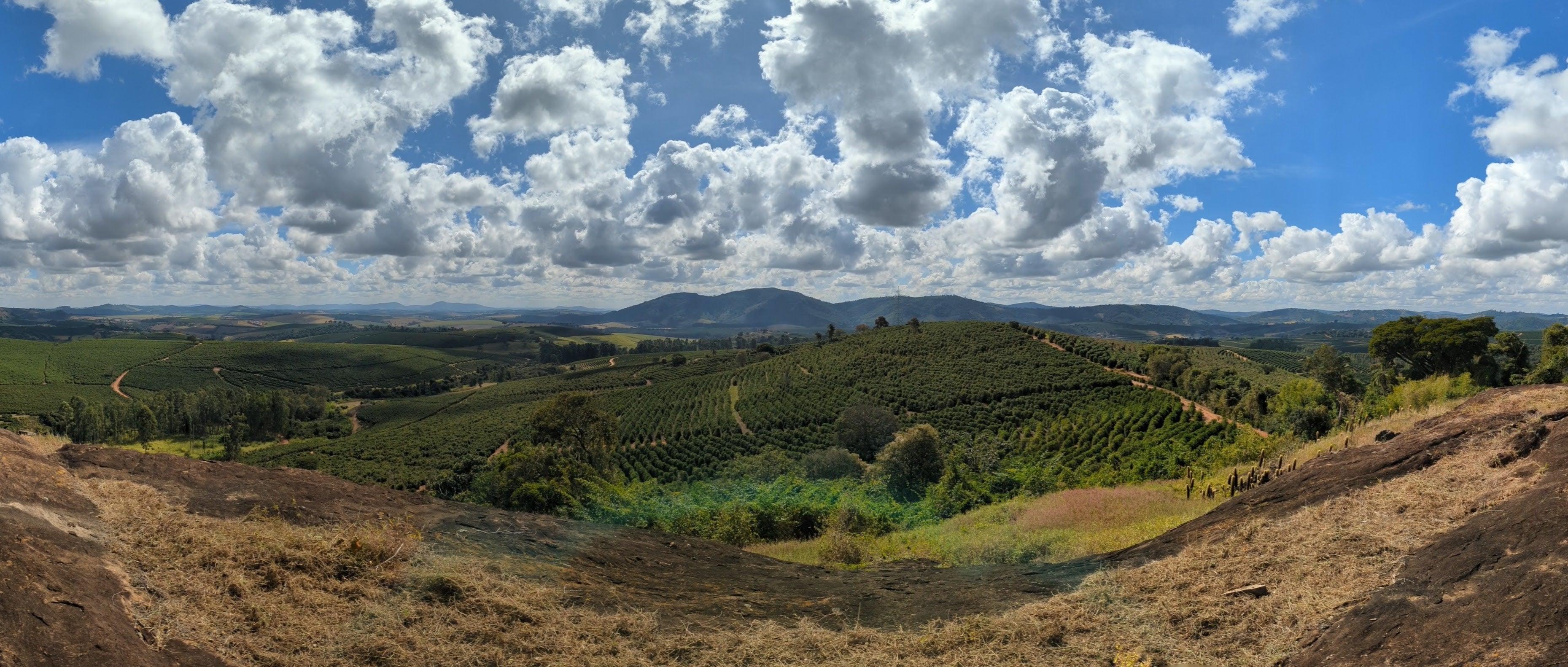

Interviewing Ted - Visiting Brazil 2022

14-07-22
Written by Helena
About a month ago, our head roaster Ted got back from a week-long trip to Brazil organised by Kamba Coffee, one of the importers we work closely with to source coffee. Led by Bruna from Kamba, Ted joined 8 other roasters and coffee professionals from the UK and Europe travelling across the state of São Paulo visiting coffee farms and dry mills. We sat down with Ted to find out more about his trip…
Helena: Hey Ted! So I wanted to start by asking you what someone can typically expect from Brazilian coffee, in terms of a flavour profile?
Ted: Traditionally we’d expect subtle acidity, of stone fruit and oranges. A heavy body, mostly natural-processed, and lots of what I would describe as ‘brown notes’, so that’s your milk chocolate, brown sugar, caramel… But it doesn’t have to be that! We are finding more Brazilian coffees that don’t fit that profile, and it’s becoming more common, especially with new fermentation methods. A great example is the Leonel Hartwig we have at Cartwheel at the moment.
H: So you set off for Brazil, you flew into São Paulo… Tell us about your first impressions. Was it super hot?
T: It actually wasn’t that hot when I first arrived because it was 6am! I took a taxi from the airport to meet the rest of the group and I was struck by how built-up São Paulo was. I don’t know what I had in mind, but there was so much culture and development everywhere, but also amazing graffiti which was really cool.
H: So from the city you went out to explore some coffee farms and dry mills? How did you travel?
T: Well each day we all crammed into a minibus, which was thankfully air conditioned, and drove to the farm or dry mill we were visiting that day. We saw around 6 different sites over the course of the week, based in and around Pinhal and Pocos. We visited Paulo Scanavachi, at Fazenda Irubi, who I bought coffee from last year for Cartwheel. That was awesome. We also had a look around the Costa Café dry mill, which is Bruna’s Dad’s business (not to be confused with the large highstreet coffee chain).
H: Can you tell us more about what a dry mill does?
T: So this is where coffee is processed from the parchment stage onwards. It’s sorted for defects and stones, that sort of thing. It’s then sorted by size and density, stripped of their parchment layer, and bagged up, ready for export.
H: What are Brazilian coffee farms like? Did anything surprise you?
T: I was surprised by how big the farms are! They’re very very large. I mean, most were at least 300 hectares (compared to a standard hillside farm in Ethiopia, this is massive). And they were so neatly organised, everything in neat rows. This is linked to the fact that they do mostly mechanical picking in Brazil. Everything is done on such a big scale.
H: What varieties were they growing?
T: Mostly Yellow and Red Bourbon, Mundo Novo and Catuai. I also saw a small amount of Topazio and there was some Maragogype growing at Fazenda Irarema (this is a variety with very large seeds, it can also be known as ‘Elephant Beans’).
H: And what was your favourite part of the trip? Got a good story to share?
T: I think it’s the day we visited Pedra Grande farm, in Pocos. We were taken around the farm, all standing on the back of a lorry! We drove up to a vantage point high up on a cliff and we sat looking over the valley, eating coffee and cake together. That was incredible.
H: So Brazilians love good food and drink, you must’ve eaten some amazing stuff. I want to hear all about that! What’s the best thing you tried?
T: Well, kilo restaurants are an amazing concept and I wish they were a thing here! Basically, you load up your plate from a buffet and pay by weight. There were lots of meat stews, including the famous Feijoada of course, and plenty of fried fish. And these little cheesy bread balls, Pão de Queijo. I also had the best ice-cream of my life, which was a chocolate flavour ice-cream called ‘Chica Bon’. I would describe it as a Mini Milk for grown-ups.
H: Love that! And please tell me you drank some caipirinhas?
T: Yeah, plenty of caipirinhas, and cold beers. Oh, and frozen shots of cachaça! They really hit the spot. We also visited some vineyards and tried wine from the Vinicola Mirantus winery. I’d never had Brazilian wine before, so that was really interesting. Apparently the Pinhal region is becoming quite famous for its wine!
H: I’m getting quite jealous now! One last question for you… Do you think this trip will change anything about the way you source/think about coffee?
T: Well I’ve never seen Brazilian coffee as very high scoring, or exciting. I often thought of it as something you put in blends. But being there definitely challenged my ideas - Brazilian coffee can be used for everything, there’s much more variety that you might expect. And I’ll definitely continue working with Kamba, because I can see that Bruna has such a personal relationship with everyone we visited and I want to continue to support that.
